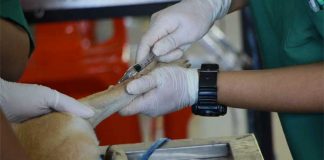As loving and loyal companions, dogs have earned their reputation as man’s best friend. They bring joy, comfort, and companionship to countless families across the world. However, it’s essential to teach your kids how to interact safely with dogs to prevent dog bites. In this guide, we will explore valuable tips to ensure a harmonious relationship between kids and dogs while keeping safety a top priority.
Start with Education
It is extremely important to educate your children on aggressive behaviors that dogs might exhibit. When dogs feel threatened they might bare their teeth, raise their ears, or even wag their tails. By explaining the basic body language of an aggressive dog, your child can recognize signs of distress in the animal and take the necessary precautions.
Watch this video with your kids for the basic safety keys:
Supervision is Key
When teaching kids to interact safely with dogs, your constant supervision is paramount for ensuring safety and fostering a positive relationship between the two. You play a crucial role in stepping in immediately if any signs of discomfort or stress arise, preventing dog bite accidents and mishaps.
You have the opportunity to teach your kids proper behavior, guiding them on gentle and respectful interactions with their furry friends. By being there, you create a trusting environment where both your children and the dogs feel at ease, leading to joyful and memorable experiences for all involved.
Respect Personal Space
Respecting a dog’s personal space is crucial. Encourage kids to avoid cornering a dog or invading their territory. Dogs, like people, need their own space and boundaries.
Additionally, do not disturb dogs while they are eating, sleeping, or caring for their puppies. These situations can make them feel vulnerable, increasing the risk of dog bites. Give dogs their space and allow them to have peaceful moments undisturbed.
Teach Proper Play
While playtime with dogs can be fun, it is extremely important to teach your kids how to appropriately play with animals. You should discourage roughhousing or aggressive play with dogs. This can escalate the dog to biting and showing other aggressive behaviors such as barking or growling.
Furthermore, your children should never approach a dog from behind or make loud noises. Sudden movements and loud sounds can trigger fear or anxiety in dogs, leading to potential defensive reactions.
Watch this video to learn more:
Always Ask for Permission From The Owner
The dog bite attorneys at NW Injury Law Center suggest that you always seek permission from the dog’s owner before interacting with the dog. Dogs are considered property under Washington law, therefore their owners are liable for any harm or injuries caused by their pets. When you ask for the owner’s permission, it establishes a clear acknowledgment of the owner’s authority over their dog and their potential liability in case of any incidents such as dog bites. Not all dogs are comfortable around strangers, and it’s essential to respect the owner’s judgment.
The “No Touch” Zones on Dogs
You should make your children aware of the “no touch” zones on a dog’s body. Some examples of the “no touch” zones would be their face, ears, and tail. These areas are sensitive and might cause discomfort if touched inappropriately. This can escalate into aggressive behavior and your child can be at risk of getting bit.
Encourage Positive Reinforcement
Positive reinforcement is a powerful tool in teaching kids to interact safely with dogs. Praise children when they demonstrate safe and respectful behavior around dogs. This positive reinforcement will motivate them to continue acting responsibly.
By educating kids about safe interactions with dogs, we can significantly reduce the risk of dog bite accidents. Responsible pet owners and child supervision are essential for ensuring the safety and happiness of both kids and dogs. It is important that you, as the parent or guardian, must encourage open communication and understanding for dogs in a safe and caring environment.



